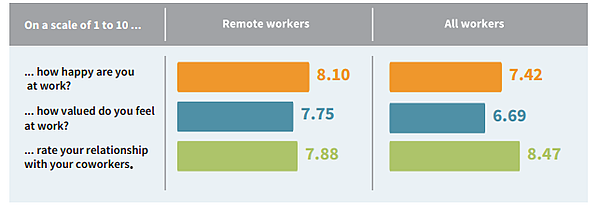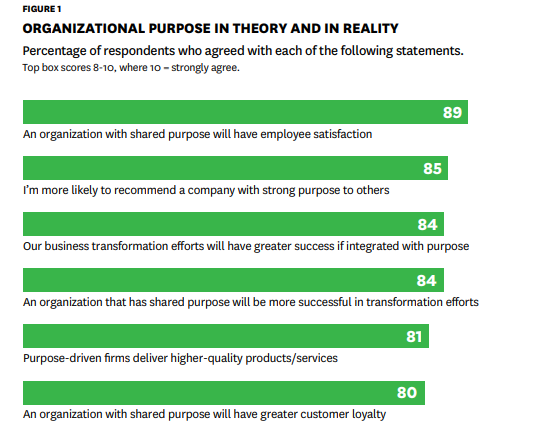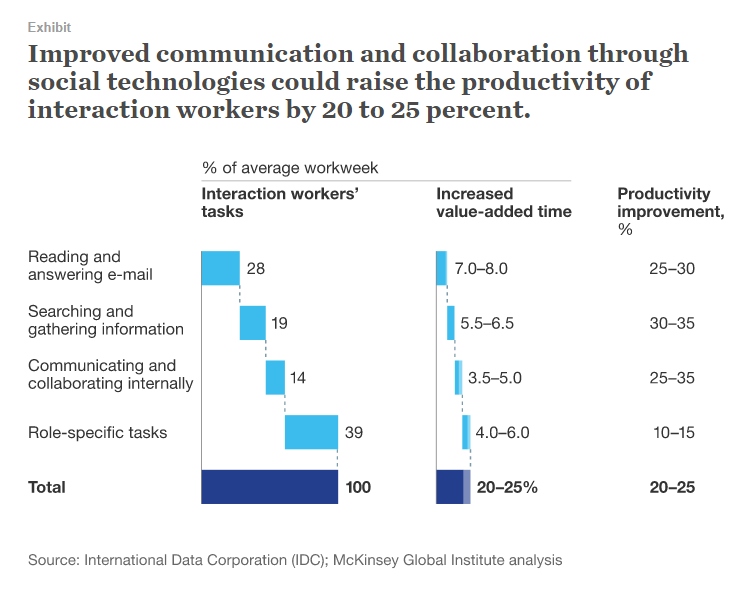How do you build a shock-proof agency in the age of pandemics and globally connected economies? If remote work is the answer, how do you succeed at it? We share some answers.
SXSW stands canceled and Cannes might go the same path. WPP’s shares are down 15% and Dentsu Japan has told all employees to work remotely. The world, it seems, is awash in panic.
The response to the Coronavirus pandemic has uncovered the inherent fragility in global systems. Businesses that spent generously on travel are cutting back. Crowded offices stand deserted.
Agencies and tech companies are taking this opportunity to shift to remote work, either temporarily or permanently. Along the way, they’re changing how we work – today, and in the future.
What does it take to respond to such emergencies? If remote work is the future, how do you adopt it successfully?
I’ll answer some of these crucial questions – and more – below.
Emergency Remote Work Plans Don’t Always Work
In the wake of the Coronavirus crisis, many businesses shut shop and switched their teams to emergency remote work plans.
But as many of them soon discovered, emergency remote work plans don’t always work out.
To understand why, let’s go back in time. To 2013, specifically.
After a much-celebrated run at Google, Merissa Meyer had just taken the helm at Yahoo! One of her first orders was the end of all remote work at the company. As she wrote in an internal memo (emphasis mine):
“To become the absolute best place to work, communication and collaboration will be important, so we need to be working side-by-side. That is why it is critical that we are all present in our offices.
Some of the best decisions and insights come from hallway and cafeteria discussions, meeting new people, and impromptu team meetings. Speed and quality are often sacrificed when we work from home.
We need to be one Yahoo!, and that starts with physically being together.”
A few years later, Verizon purchased Yahoo – once valued at over $ 100B – for a little under $ 5B.
In September 2019, Automattic, makers of the popular WordPress CMS, raised $ 300M at a valuation of $ 3B. In contrast to Yahoo, which had barely dipped its toes in the remote work pool, Automattic is 100% remote-only. All of Automattic’s nearly 1,000 employees work from coworking spaces, cafes, and homes.

Studies show that remote workers are happier than their in-office counterparts (Source)
Automattic’s success – and Yahoo’s failure – are a stark reminder that many businesses aren’t ready to accept: remote work is a matter of culture.
As one author writing in Harvard Business Review notes:
“Many companies focus too much on technology and not enough on process. This is akin to trying to fix a sports team’s performance by buying better equipment. These adjustments alone might result in minor improvements, but real change requires a return to fundamentals.”
This is why emergency remote work plans in response to a crisis seldom work out. You can adopt new technology, but you’ll rarely, if ever, have the processes and culture to be truly productive.
Any transition to remote work, thus, should start by hacking at the very foundation of your business.
The Three Ingredients of Remote Work Success
The one thing every remote-only business lacks is a clear sense of presence.
Presence mitigates so many of the problems remote-only businesses face. Presence – in the form of meetings, team building activities [link], and even cafeteria conversations – creates the binding glue guides the business’ culture and overall direction.
Most attempts to fix remote work focus on creating a better sense of presence. All modern communication tools – Zoom, Slack, Skype, etc. – are designed precisely to give teammates more seamless access to each other.
But such tech-focused attempts fail when your business doesn’t have the underlying structure to adopt remote work. You can’t bandage Slack and Zoom onto a team that doesn’t fundamentally understand the nuances of working remotely.
Instead, you need to ensure that you have all the core ingredients to make remote work successful:
1. A strong focus on processes
Remote teams can often feel like they’re going nowhere and everywhere at the same time. Individuals can pull the team in the direction they feel is right, often leading to no clear sense of purpose or direction.
The culprit?
A lack of focus on processes.
Processes offer clarity and direction in the absence of in-person meetings and “stop-by-the-cubicle” conversations. They tell team members what to work on, where to document knowledge, and where to seek help.

Businesses with a clear sense of purpose and processes have happier employees
This becomes even more important in an agency setting where roles are often fluid and success depends greatly on past learnings.
For instance, in a real-world office, you might stop by a designer’s office to learn how she tackled a similar project in the past. But in a remote setting, you’ll want the designer to document this in a central knowledge base.
Chiefly, you need to have processes to:
- Document and seek project related information
- Identify roles and communication protocols
- Ensure enforcement of processes
The last bit is particularly important. It’s not enough to simply create processes; your managers also need to ensure that people follow them. If all resources are required to document their key learnings in a knowledge base, any lapses will erode the processes over time.
2. Strong communication
Communication is a major impediment to success in remote-only teams. The absence of presence means that complex discussions become a hassle. You can’t read into body language to understand the intent behind statements, nor can you rely on social cues to build consensus on an issue.
Fixing communication is a two-part process:
- Adopting better technology – and using it for the right kind of communication
- Adopting better processes and practices for sharing information
Point #1 is about matching the message with the medium. The more complex the message is, the stronger a sense of “presence” you’ll need to relate it.
Asking someone about the due date for a deliverable? Just hop over to your chat tool and ask away.
But if you’re holding discussions on strategy, chat would be a poor tool to relay your message. A high information-density channel, such as video conferencing, can fix most body language and social cues-related issues.
Similarly, good remote team communication depends heavily on processes and protocols. Your team members should know exactly what to communicate, when, and with whom.
For instance, if you’re asking a team member about an open request on a key deliverable, you should have a protocol that identifies:
- The project name and number
- The request name and number (if any)
- The requesting authority
- Any last updates on the request
A simple protocol such as this can solve much of the back-and-forth that plagues remote team communication.
3. A remote-friendly culture
All things being equal, a company with a more conducive culture for remote work will outperform one with better tools and processes.
In fact, it wouldn’t be wrong to say that culture is the single biggest determinant in remote work success.
But let’s backtrack – what does a remote-friendly culture look like?
Namely, this culture:
- Encourages sharing and collaboration
- Adopts transparency and openness
- Commits completely to remote work
- Nurtures trust between team members
- Practices empathy
Cultural problems can be tough to fix. Companies that embrace remote work half-heartedly might see remote workers as “slackers” who only want to work from home. Or they might have a culture of distrust and opaqueness that keeps team members from sharing vital information with each other.
Fixing this can sometimes mean reimagining your business from the ground up. But if you want to be ready for the future of work, you should be willing to take this step.
The bigger question is – how do you solve cultural issues? And what steps can you take to make the transition to remote work smoother?
How to Transition to Remote Work Smoothly
Shifting to remote work – over time or immediately (as in the case of an emergency) – can’t be a half-hearted effort. You have to commit to it fully. The cultural impediments to remote work need a full-fledged, organization-wide effort to resolve.
Although this is still a developing field, there are some steps you can adopt to transition smoothly to remote work:
1. Be prepared to question your beliefs about remote work
The first point of resistance to remote work is internal. By habit or experience, we all have certain dogmas about what work can be done remotely, what can’t.
Coding and designing? Sure – you can do that remotely. But client meetings and project management? Doesn’t that require in-person presence?
The truth is that countless tasks that we think require physical presence can be done just as well online. Project managers can be just as effective hosting virtual meetings. Sales can be done just as well over a video call as an in-person visit.
Once you start analyzing your work, you’ll realize that there are only a handful of tasks that truly require physical presence.
Challenging your assumptions is the first step in the journey to remote work success.
2. Map out work that can be done remotely
While a bulk of agency work can be done online, some tasks still require a partial or complete physical presence (such as a producer working on a TV commercial).
Start by mapping out your work into three categories:
- Work that can be done entirely online (such as design, coding, digital marketing, etc.)
- Work that can only be done physically (some sales, production, etc.)
- Work that requires a partial physical presence (some sales and management roles)
Work that can be done entirely online should be your top priority. But over-time, you should look to bring all partially online work into the remote fold as well.
3. Evaluate your processes and protocols
Even the most informally organized businesses have at least some processes to direct their work.
Your next step, thus, should be to document all your processes and protocols. In particular, focus on your processes for:
- Communication: Identify the protocols, established practices, and “unsaid rules” that govern communication in your agency – both internal and external
- Roles and tasks: How do you establish roles in a project? How do you identify and share tasks? What is your process for tracking task progress (and communicating any lapses)?
- Project management: What processes do you use to delegate tasks, manage communication, and create key project documents?
- Knowledge management: Do you have a centralized knowledge base? What processes and protocols do you use to document learnings in it?
4. Fix processes and use better software
It can be tempting to simply adopt newer software and use it to fill the gap in your processes. After all, why create protocols for communication when you can just use Slack to share everything?
This approach is fraught with risk. It is also almost never scalable. Unless your software adoption is backed by processes, it will eventually get overwhelmed and end up in anarchy.
For instance, you might have a Slack channel for office chatter – sort of like the water cooler. But if you don’t moderate this channel, work-related conversations can slip into it. Before you know it, key project details are being shared – and getting lost – in between jokes and random chatter.
The right approach, thus, is to:
- Create processes and protocols to govern communication, task management, project management, and knowledge management
- Use software to make it easier to use and scale up your processes
With this approach, software is a force multiplier, not a bandage. If you’ve established clear protocols for, say, knowledge management, better software can make it easier to document and share knowledge.
For example, a study published by McKinsey found that when social technologies are combined with strong processes, it can lead to a 20-25 percent increase in productivity in knowledge firms.

5. Reorient your culture
The last – and most important – step is to change your culture.
This a long-term exercise and can’t be done overnight. Transparency, trust, openness, and empathy – so crucial for remote work success – require focused attention and effort.
Unfortunately, agency culture is a vast topic that can’t be covered entirely in this space. I recommend reading these two articles to get a better understanding of culture and how to build one that’s conducive to remote work:
Over to You
Remote work is a great challenge, and an even greater opportunity. Besides making workers happier and cutting costs, it also makes your business more “shock-proof”.
Transitioning from regular to remote work takes effort. Use this as a guide to start on this path and take your agency completely online.
Business & Finance Articles on Business 2 Community
(35)
Report Post




